formerly eScholarship Editions


|
|
|
|
Browse by Author
All Titles | Public Titles
A | B | C | D | E | F | G | H | I | J | K | L | M | N | O | P | Q | R | S | T | U | V | W | Y | Z | OTHERYour request for authors beginning with P found 57 book(s). | Modify Search | Displaying 21 - 40 of 57 book(s) | |
| 21. |  | Title: The poet's truth: a study of the poet in Virgil's Georgics Author: Perkell, Christine Published: University of California Press, 1989 Subjects: Classics | Classical Literature and Language Publisher's Description: The controversy over Virgil's optimism or pessimism, which has long absorbed readers of his poetry, might fruitfully yield to a perspective which allows contradictions to stand unresolved, to constitute, in fact, the essence of his poems' meaning. So interpreted, the pervasive contradictions of the Georgics are not problems to be solved, but expressions of the poet's vision of fundamental tensions in human experience.Focusing on the figure of the poet in his relationship to the farmer, Professor Perkell studies oppositions between power and beauty, profit and art, matter and spirit, which are critical to the poem's meaning. She points to the poet's privileging of myth over praeceptum , of divine revelation over experiment and practice, and of mystery over solution. The poem's oppositions find ultimate expression in the bougonia , literally false as Georgic precept but metaphorically true as image of Iron Age technology and culture. Through this metaphor, the poet suggests the high value of his own truth and implicitly challenges the values of the agricultural, material poem which the Georgics on its surface professes to be.Shaped by insights of reader-response and structuralist criticism, this new study of the Georgics should interest Classicists and students of literature. [brief] Similar Items |
| 22. | 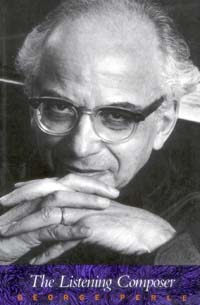 | Title: The listening composer Author: Perle, George 1915- Published: University of California Press, 1990 Subjects: Music | Contemporary Music | Composers Publisher's Description: George Perle takes us into the composer's workshop as he reevaluates what we call "twentieth-century music" - a term used to refer to new or modern or contemporary music that represents a radical break from the tonal tradition, or "common practice," of the preceding three centuries. He proposes that this music, in the course of breaking with the tonal tradition, presents coherent and definable elements of a new tradition. In spite of the disparity in their styles, idioms, and compositional methods, he argues, what unites Scriabin, Stravinsky, Bartók, and the Viennese circle (Schoenberg, Berg, and Webern) is more important than what separates them.If we are to understand the connections among these mainstream composers, we also have to understand their connections with the past. Through an extraordinarily comprehensive analysis of a single piece by Varèse, Density 21.5 for unaccompanied flute, Perle shows how these composers refer not only to their contemporaries but also to Wagner, Debussy, and Beethoven.Perle isolates the years 1909-10 as the moment of revolutionary transformation in the foundational premises of our musical language. He asks: What are the implications of this revolution, not only for the composer, but also for the listener? What are the consequences for the theory and teaching of music today? In his highly original answers, Perle relates the role of intuition in the listening experience to its role in the compositional process.Perle asserts that the post-Schoenbergian serialists have preoccupied themselves with secondary and superficial aspects of Schoenberg's twelve-tone method that have led it to a dead end but he also exposes the speciousness of current alternatives such as chance music, minimalism, and the so-called return to tonality. He offers a new and more comprehensive definition of "twelve-tone music" and firmly rejects the notion that accessibility to the new music is reserved for a special class of elite listeners. [brief] Similar Items |
| 23. | 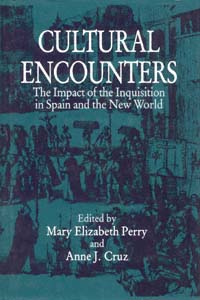 | Title: Cultural encounters: the impact of the Inquisition in Spain and the New World Author: Perry, Mary Elizabeth 1937- Published: University of California Press, 1991 Subjects: History | Anthropology | European History | Religion | Renaissance History Publisher's Description: More than just an expression of religious authority or an instrument of social control, the Inquisition was an arena where cultures met and clashed on both shores of the Atlantic. This pioneering volume examines how cultural identities were maintained despite oppression.Persecuted groups were able to survive the Inquisition by means of diverse strategies - whether Christianized Jews in Spain preserving their experiences in literature, or native American folk healers practicing medical care. These investigations of social resistance and cultural persistence will reinforce the cultural significance of the Inquisition. [brief] Similar Items |
| 24. |  | Title: When a doctor hates a patient, and other chapters in a young physician's life Author: Peschel, Richard E Published: University of California Press, 1988 Subjects: Medicine | Science Similar Items |
| 25. | 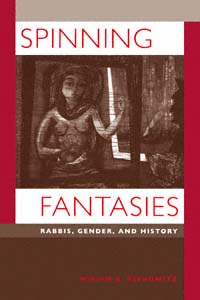 | Title: Spinning fantasies: rabbis, gender, and history Author: Peskowitz, Miriam 1964- Published: University of California Press, 1997 Subjects: Jewish Studies | Gender Studies | Ancient History Publisher's Description: Miriam Peskowitz offers a dramatic revision to our understanding of early rabbinic Judaism. Using a wide range of sources - archaeology, legal texts, grave goods, technology, art, and writings in Hebrew, Aramaic, Greek, and Latin - she challenges traditional assumptions regarding Judaism's historical development.Following the destruction of the Jerusalem Temple by Roman armies in 70 C.E., new incarnations of Judaism emerged. Of these, rabbinic Judaism was the most successful, becoming the classical form of the religion. Through ancient stories involving Jewish spinners and weavers, Peskowitz re-examines this critical moment in Jewish history and presents a feminist interpretation in which gender takes center stage. She shows how notions of female and male were developed by the rabbis of Roman Palestine and why the distinctions were so important in the formation of their religious and legal tradition.Rabbinic attention to women, men, sexuality, and gender took place within the "ordinary tedium of everyday life, in acts that were both familiar and mundane." While spinners and weavers performed what seemed like ordinary tasks, their craft was in fact symbolic of larger gender and sexual issues, which Peskowitz deftly explicates. Her study of ancient spinning and her abundant source material will set new standards in the fields of gender studies, Jewish studies, and cultural studies. [brief] Similar Items |
| 26. | 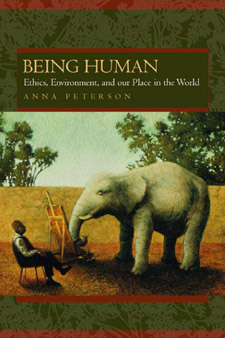 | Title: Being human: ethics, environment, and our place in the world Author: Peterson, Anna Lisa 1963- Published: University of California Press, 2001 Subjects: Religion | Folklore and Mythology | Environmental Studies | Philosophy Publisher's Description: Being Human examines the complex connections among conceptions of human nature, attitudes toward non-human nature, and ethics. Anna Peterson proposes an "ethical anthropology" that examines how ideas of nature and humanity are bound together in ways that shape the very foundations of cultures. Peterson discusses mainstream Western understandings of what it means to be human, as well as alternatives to these perspectives, and suggests that the construction of a compelling, coherent environmental ethics will revise our ideas not only about nature but also about what it means to be human. [brief] Similar Items |
| 27. |  | Title: Losing face: status politics in Japan Author: Pharr, Susan J Published: University of California Press, 1992 Subjects: History | Asian Studies | Asian History | Japan | Politics Publisher's Description: How does a "homogeneous" society like Japan treat the problem of social inequality? Losing Face looks beyond conventional structural categories (race, class, ethnicity) to focus on conflicts based on differences in social status. Three rich and revealing case studies explore crucial asymmetries of a . . . [more] Similar Items |
| 28. | 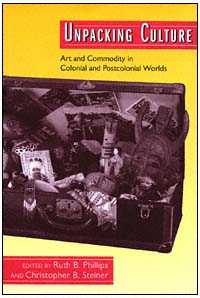 | Title: Unpacking culture: art and commodity in colonial and postcolonial worlds Author: Phillips, Ruth B. (Ruth Bliss) 1945- Published: University of California Press, 1999 Subjects: Anthropology | Social Science | Art History | Postcolonial Studies Publisher's Description: Tourist art production is a global phenomenon and is increasingly recognized as an important and authentic expression of indigenous visual traditions. These thoughtful, engaging essays provide a comparative perspective on the history, character, and impact of tourist art in colonized societies in three areas of the world: Africa, Oceania, and North America. Ranging broadly historically and geographically, Unpacking Culture is the first collection to bring together substantial case studies on this topic from around the world. [brief] Similar Items |
| 29. | 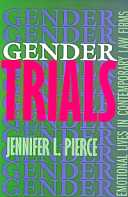 | Title: Gender trials: emotional lives in contemporary law firms Author: Pierce, Jennifer L 1958- Published: University of California Press, 1996 Subjects: Gender Studies | Law | Sociology | Social Problems | Women's Studies Publisher's Description: This engaging ethnography examines the gendered nature of today's large corporate law firms. Although increasing numbers of women have become lawyers in the past decade, Jennifer Pierce discovers that the double standards and sexist attitudes of legal bureaucracies are a continuing problem for women lawyers and paralegals.Working as a paralegal, Pierce did ethnographic research in two law offices, and her depiction of the legal world is quite unlike the glamorized version seen on television. Pierce tellingly portrays the dilemma that female attorneys face: a woman using tough, aggressive tactics - the ideal combative litigator - is often regarded as brash or even obnoxious by her male colleagues. Yet any lack of toughness would mark her as ineffective.Women paralegals also face a double bind in corporate law firms. While lawyers depend on paralegals for important work, they also expect these women - for most paralegals are women - to nurture them and affirm their superior status in the office hierarchy. Paralegals who mother their bosses experience increasing personal exploitation, while those who do not face criticism and professional sanction. Male paralegals, Pierce finds, do not encounter the same difficulties that female paralegals do.Pierce argues that this gendered division of labor benefits men politically, economically, and personally. However, she finds that women lawyers and paralegals develop creative strategies for resisting and disrupting the male-dominated status quo. Her lively narrative and well-argued analysis will be welcomed by anyone interested in today's gender politics and business culture. [brief] Similar Items |
| 30. | 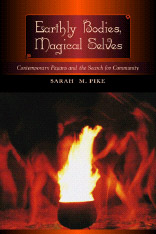 | Title: Earthly bodies, magical selves: contemporary pagans and the search for community Author: Pike, Sarah M 1959- Published: University of California Press, 2001 Subjects: Religion | Anthropology Publisher's Description: Recent decades have seen a revival of paganism, and every summer people gather across the United States to celebrate this increasingly popular religion. Sarah Pike's engrossing ethnography is the outcome of five years attending neo-pagan festivals, interviewing participants, and sometimes taking part in their ceremonies. Earthly Bodies, Magical Selves incorporates her personal experience and insightful scholarly work concerning ritual, sacred space, self-identity, and narrative. The result is a compelling portrait of this frequently misunderstood religious movement. Neo-paganism began emerging as a new religious movement in the late 1960s. In addition to bringing together followers for self-exploration and participation in group rituals, festivals might offer workshops on subjects such as astrology, tarot, mythology, herbal lore, and African drumming. But while they provide a sense of community for followers, Neo-Pagan festivals often provoke criticism from a variety of sources - among them conservative Christians, Native Americans, New Age spokespersons, and media representatives covering stories of rumored "Satanism" or "witchcraft." Earthly Bodies, Magical Selves explores larger issues in the United States regarding the postmodern self, utopian communities, cultural improvisation, and contemporary spirituality. Pike's accessible writing style and her nonsensationalistic approach do much to demystify neo-paganism and its followers. [brief] Similar Items |
| 31. | 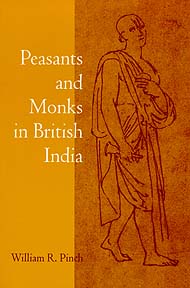 | Title: Peasants and monks in British India Author: Pinch, William R 1960- Published: University of California Press, 1996 Subjects: History | Asian History | South Asia | Postcolonial Studies | Hinduism Publisher's Description: In this compelling social history, William R. Pinch tackles one of the most important but most neglected fields of the colonial history of India: the relation between monasticism and caste. The highly original inquiry yields rich insights into the central structure and dynamics of Hindu society - insights that are not only of scholarly but also of great political significance.Perhaps no two images are more associated with rural India than the peasant who labors in an oppressive, inflexible social structure and the ascetic monk who denounces worldly concerns. Pinch argues that, contrary to these stereotypes, North India's monks and peasants have not been passive observers of history; they have often been engaged with questions of identity, status, and hierarchy - particularly during the British period. Pinch's work is especially concerned with the ways each group manipulated the rhetoric of religious devotion and caste to further its own agenda for social reform. Although their aims may have been quite different - Ramanandi monastics worked for social equity, while peasants agitated for higher social status - the strategies employed by these two communities shaped the popular political culture of Gangetic north India during and after the struggle for independence from the British. [brief] Similar Items |
| 32. | 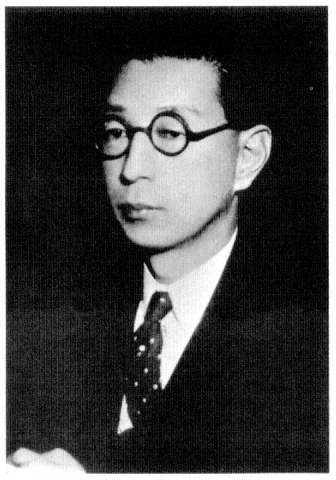 | Title: Authenticating culture in imperial Japan: Kuki Shūzō and the rise of national aesthetics Author: Pincus, Leslie 1950- Published: University of California Press, 1996 Subjects: History | Asian History | Japan | Asian Literature Publisher's Description: During the interwar years in Japan, discourse on culture turned sharply inward after generations of openness to Western ideas. The characterizations that arose - that Japanese culture is unique, essential, and enduring - came to be accepted both inside and outside Japan. Leslie Pincus focuses on the work of Kuki Shuzo, a philosopher and the author of the classic "Iki" no Kozo , to explore culture and theory in Japan during the interwar years. She shows how Japanese intellectual culture ultimately became complicit, even instrumental, in an increasingly repressive and militaristic regime that ultimately brought the world to war.Pincus provides an extensive critical study of Kuki's intellectual lineage and shows how it intersects with a number of central figures in both European and Japanese philosophy. The discussion moves between Germany, France, and Japan, providing a guide to the development of culture in a number of national settings from the turn of the century to the 1930s.Inspired by the work of Foucault, the Marxist culturalists, and the Frankfurt School, Pincus reads against the grain of traditional interpretation. Her theoretically informed approach situates culture in a historical perspective and charts the ideological dimensions of cultural aesthetics in Japan. Authenticating Culture in Imperial Japan makes an important contribution to our understanding of modernity, nationalism, and fascism in the early twentieth century. [brief] Similar Items |
| 33. | 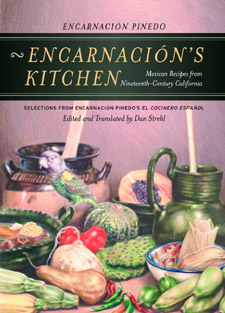 | Title: Encarnación's kitchen: Mexican recipes from nineteenth-century California: selections from Encarnación Pinedo's El cocinero español Author: Pinedo, Encarnación b. 1848 Published: University of California Press, 2003 Subjects: Food and Cooking | California and the West | Californian and Western History | Ethnic Studies | Women's Studies Publisher's Description: In 1991 Ruth Reichl, then a Los Angeles Times food writer, observed that much of the style now identified with California cuisine, and with nouvelle cuisine du Mexique, was practiced by Encarnación Pinedo a century earlier. A landmark of American cuisine first published in 1898 as El cocinero español (The Spanish Cook), Encarnación's Kitchen is the first cookbook written by a Hispanic in the United States, as well as the first recording of Californio food - Mexican cuisine prepared by the Spanish-speaking peoples born in California. Pinedo's cookbook offers a fascinating look into the kitchens of a long-ago culture that continues to exert its influence today. Of some three hundred of Pinedo's recipes included here - a mixture of Basque, Spanish, and Mexican - many are variations on traditional dishes, such as chilaquiles, chiles rellenos, and salsa (for which the cook provides fifteen versions). Whether describing how to prepare cod or ham and eggs (a typical Anglo dish labeled "huevos hipócritas" ), Pinedo was imparting invaluable lessons in culinary history and Latino culture along with her piquant directions. In addition to his lively, clear translation, Dan Strehl offers a remarkable view of Pinedo's family history and of the material and literary culture of early California cooking. Prize-winning journalist Victor Valle puts Pinedo's work into the context of Hispanic women's testimonios of the nineteenth century, explaining how the book is a deliberate act of cultural transmission from a traditionally voiceless group. [brief] Similar Items |
| 34. | 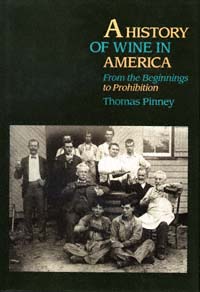 | Title: A history of wine in America from the beginnings to prohibition Author: Pinney, Thomas Published: University of California Press, 1989 Subjects: Food and Cooking | United States History | American Studies | Wine Publisher's Description: The Vikings called North America "Vinland," the land of wine. Giovanni de Verrazzano, the Italian explorer who first described the grapes of the New World, was sure that "they would yield excellent wines." And when the English settlers found grapes growing so thickly that they covered the ground down to the very seashore, they concluded that "in all the world the like abundance is not to be found." Thus, from the very beginning the promise of America was, in part, the alluring promise of wine. How that promise was repeatedly baffled, how its realization was gradually begun, and how at last it has been triumphantly fulfilled is the story told in this book.It is a story that touches on nearly every section of the United States and includes the whole range of American society from the founders to the latest immigrants. Germans in Pennsylvania, Swiss in Georgia, Minorcans in Florida, Italians in Arkansas, French in Kansas, Chinese in California - all contributed to the domestication of Bacchus in the New World. So too did innumerable individuals, institutions, and organizations. Prominent politicians, obscure farmers, eager amateurs, sober scientists: these and all the other kinds and conditions of American men and women figure in the story. The history of wine in America is, in many ways, the history of American origins and of American enterprise in microcosm.While much of that history has been lost to sight, especially after Prohibition, the recovery of the record has been the goal of many investigators over the years, and the results are here brought together for the first time. [brief] Similar Items |
| 35. | 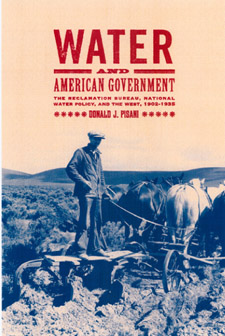 | Title: Water and American government: the Reclamation Bureau, national water policy, and the West, 1902-1935 Author: Pisani, Donald J Published: University of California Press, 2002 Subjects: History | United States History | Water | Public Policy | Geography | California and the West | Californian and Western History Publisher's Description: Donald Pisani's history of perhaps the boldest economic and social program ever undertaken in the United States--to reclaim and cultivate vast areas of previously unusable land across the country - shows in fascinating detail how ambitious government programs fall prey to the power of local interest groups and the federal system of governance itself. What began as the underwriting of a variety of projects to create family farms and farming communities had become by the 1930s a massive public works and regional development program, with an emphasis on the urban as much as on the rural West. [brief] Similar Items |
| 36. | 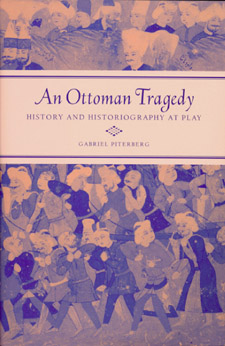 | Title: An Ottoman tragedy: history and historiography at play Author: Piterberg, Gabriel 1955- Published: University of California Press, 2003 Subjects: History | Middle Eastern History | Historiography | Middle Eastern Studies Publisher's Description: In the space of six years early in the seventeenth century, the Ottoman Empire underwent such turmoil and trauma - the assassination of the young ruler Osman II, the re-enthronement and subsequent abdication of his mad uncle Mustafa I, for a start - that a scholar pronounced the period's three-day-long dramatic climax "an Ottoman Tragedy." Under Gabriel Piterberg's deft analysis, this period of crisis becomes a historical laboratory for the history of the Ottoman Empire in the seventeenth century - an opportunity to observe the dialectical play between history as an occurrence and experience and history as a recounting of that experience. Piterberg reconstructs the Ottoman narration of this fraught period from the foundational text, produced in the early 1620s, to the composition of the state narrative at the end of the seventeenth century. His work brings theories of historiography into dialogue with the actual interpretation of Ottoman historical texts, and forces a rethinking of both Ottoman historiography and the Ottoman state in the seventeenth century. A provocative reinterpretation of a major event in Ottoman history, this work reconceives the relation between historiography and history. [brief] Similar Items |
| 37. | 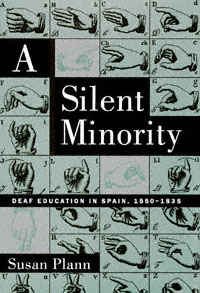 | Title: A silent minority: deaf education in Spain, 1550-1835 Author: Plann, Susan Published: University of California Press, 1997 Subjects: History | Language and Linguistics | Medieval History | European History | Education | European Studies | Medieval Studies | Cultural Anthropology | Cultural Anthropology Publisher's Description: This timely, important, and frequently dramatic story takes place in Spain, for the simple reason that Spain is where language was first systematically taught to the deaf. Instruction is thought to have begun in the mid-sixteenth century in Spanish monastic communities, where the monks under vows of silence employed a well-established system of signed communications. Early in the 1600s, deaf education entered the domain of private tutors, laymen with no use for manual signs who advocated oral instruction for their pupils. Deaf children were taught to speak and lip-read, and this form of deaf education, which has been the subject of controversy ever since, spread from Spain throughout the world.Plann shows how changing conceptions of deafness and language constantly influenced deaf instruction. Nineteenth-century advances brought new opportunities for deaf students, but at the end of what she calls the preprofessional era of deaf education, deaf people were disempowered because they were barred from the teaching profession. The Spanish deaf community to this day shows the effects of the exclusion of deaf teachers for the deaf.The questions raised by Plann's narrative extend well beyond the history of deaf education in Spain: they apply to other minority communities and deaf cultures around the world. At issue are the place of minority communities within the larger society and, ultimately, our tolerance for human diversity and cultural pluralism. [brief] Similar Items |
| 38. | 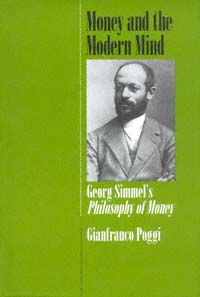 | Title: Money and the modern mind: George Simmel's Philosophy of money Author: Poggi, Gianfranco Published: University of California Press, 1993 Subjects: Social Science | Philosophy | Economics and Business | Social Theory | European Studies Publisher's Description: A major representative of the German sociological tradition, Georg Simmel (1858-1918) has influenced social thinkers ranging from the Chicago School to Walter Benjamin. His magnum opus, The Philosophy of Money , published in 1900, is nevertheless a difficult book that has daunted many would-be readers. Gianfranco Poggi makes this important work accessible to a broader range of scholars and students, offering a compact and systematically organized presentation of its main arguments.Simmel's insights about money are as valid today as they were a hundred years ago. Poggi provides a sort of reader's manual to Simmel's work, deepening the reader's understanding of money while at the same time offering a new appreciation of the originality of Simmel's social theory. [brief] Similar Items |
| 39. |  | Title: Jazz, rock, and rebels: cold war politics and American culture in a divided Germany Author: Poiger, Uta G 1965- Published: University of California Press, 2000 Subjects: German Studies | Cultural Anthropology | European History | United States History | American Music | Jazz | Gender Studies | American Studies Publisher's Description: In the two decades after World War II, Germans on both sides of the iron curtain fought vehemently over American cultural imports. Uta G. Poiger traces how westerns, jeans, jazz, rock 'n' roll, and stars like Marlon Brando or Elvis Presley reached adolescents in both Germanies, who eagerly adopted the new styles. Poiger reveals that East and West German authorities deployed gender and racial norms to contain Americanized youth cultures in their own territories and to carry on the ideological Cold War battle with each other. Poiger's lively account is based on an impressive array of sources, ranging from films, newspapers, and contemporary sociological studies, to German and U.S. archival materials. Jazz, Rock, and Rebels examines diverging responses to American culture in East and West Germany by linking these to changes in social science research, political cultures, state institutions, and international alliance systems. In the first two decades of the Cold War, consumer culture became a way to delineate the boundaries between East and West. This pathbreaking study, the first comparative cultural history of the two Germanies, sheds new light on the legacy of Weimar and National Socialism, on gender and race relations in Europe, and on Americanization and the Cold War. [brief] Similar Items |
| 40. | 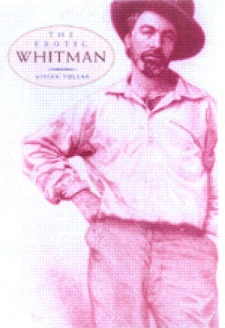 | Title: The erotic Whitman Author: Pollak, Vivian R Published: University of California Press, 2000 Subjects: Literature | American Studies | Gender Studies | American Literature | Literary Theory and Criticism Publisher's Description: In this provocative analysis of Whitman's exemplary quest for happiness, Vivian Pollak skillfully explores the intimate relationships that contributed to his portrayal of masculinity in crisis. She maintains that in representing himself as a characteristic nineteenth-century American and in proposing to heal national ills, Whitman was trying to temper his own inner conflicts as well. The poet's expansive vision of natural eroticism and of unfettered comradeship between democratic equals was, however, only part of the story. As Whitman waged a conscious campaign to challenge misogynistic and homophobic literary codes, he promoted a raceless, classless ideal of sexual democracy that theoretically equalized all varieties of desire and resisted none. Pollak suggests that this goal remains imperfectly achieved in his writings, which liberates some forbidden voices and silences others. Integrating biography and criticism, Pollak employs a loosely chronological organization to describe the poet's multifaceted "faith in sex." Drawing on his early fiction, journalism, poetry, and self-reviews, as well as letters and notebook entries, she shows how in spite of his personal ambivalence about sustained erotic intimacy, Whitman came to imagine himself as "the phallic choice of America." [brief] Similar Items |